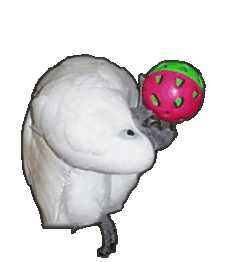Published May 27, 2005
So there was this flu-like thing that was making its way slowly through the whole PRIME group; I got it two weeks ago. Fortunately it only lasted a day and a half (as compared to up to a week for other people), but, as soon as I felt better, I went out for churrascaria and several caipirhinas, and that was pushing it too hard; the flu turned into a stomach thing that laid me up for most of another day. So, today I took it easy, walking down Copacabana beach to the beautiful Fort Copacabana.
Fort Copacabana dominates the Rio Harbor, so it’s easy to understand why the Brazilian government would choose that position. It’s less easy to understand exactly who the fort was supposed to protect Rio against; while Brazil had difficult relationships with many of its’ neighbors, it’s hard to believe that, say, Paraguay might send a cruiser squadron in to bombard the cidade maravilhosa. Instead, this fort, with its’ massive (for the WWI era) 305mm/12.2” Krupp (they state proudly) guns, was probably designed as a statement that Brazil had arrived, that she was a power. These statements seem to appear in Brazilian governmental building every so often (Brasilia, Maracana, Municipal Cathedral, etc.), and always seem to be a bit premature.
But, anyway, enough editorializing about politics I don’t know much about. I’d rather talk about the Fort itself (pictures coming). It’s a big, turtle-shaped concrete bastion at the end of a point, topped with two yarmulke-shapped turrets. Inside, the fort is a maze of tiled corridors and wood-appointed chambers. The turret mechanisms have been preserved whole, and much of the rest of the fort is set up to show its various eras of operations — WWI, between the wars, and WWII — and to show the weapons used in these periods. In fact, displays include machineguns dating as far back as the 1880s, as well as gigantic diesel generators and hydraulic pumps coming straight out of Metropolis.
The views from the top of the fort are incredible, with Rio stretching behind you and the harbor to your left, right, and front. So are the views from the cafe, which serves somewhat pretentious European-style food to do with the panorama of Copacabana and Sugarloaf. An hour’s break there, with a snack, was the perfect end to the day.
One of the nice things about the Fort, whose staff is all from the ARm, is that it’s free of the beggars and scam artists who line Copacabana and are happy to offer you truly horrible folk art and entire three foot-long, fully-rigged sailing ships, and who are happy to sneak up behind you and squirt baby food on your shoes so that their friends can then offer you shoeshines to clean off the gunk, for the princely sum of 100 reals (about $40). It’s almost an argument for… well, I said this wouldn’t become an ill-informed political diatribe.
So tonight I’m feeling fine; we’ll see how long that keeps up. Certainly, the many sandwich and juice shops in Copacabana make it easy to keep fed and watered without having to walk far. Hopefully one last night in will leave me with the energy to get out on my last night in Rio.
